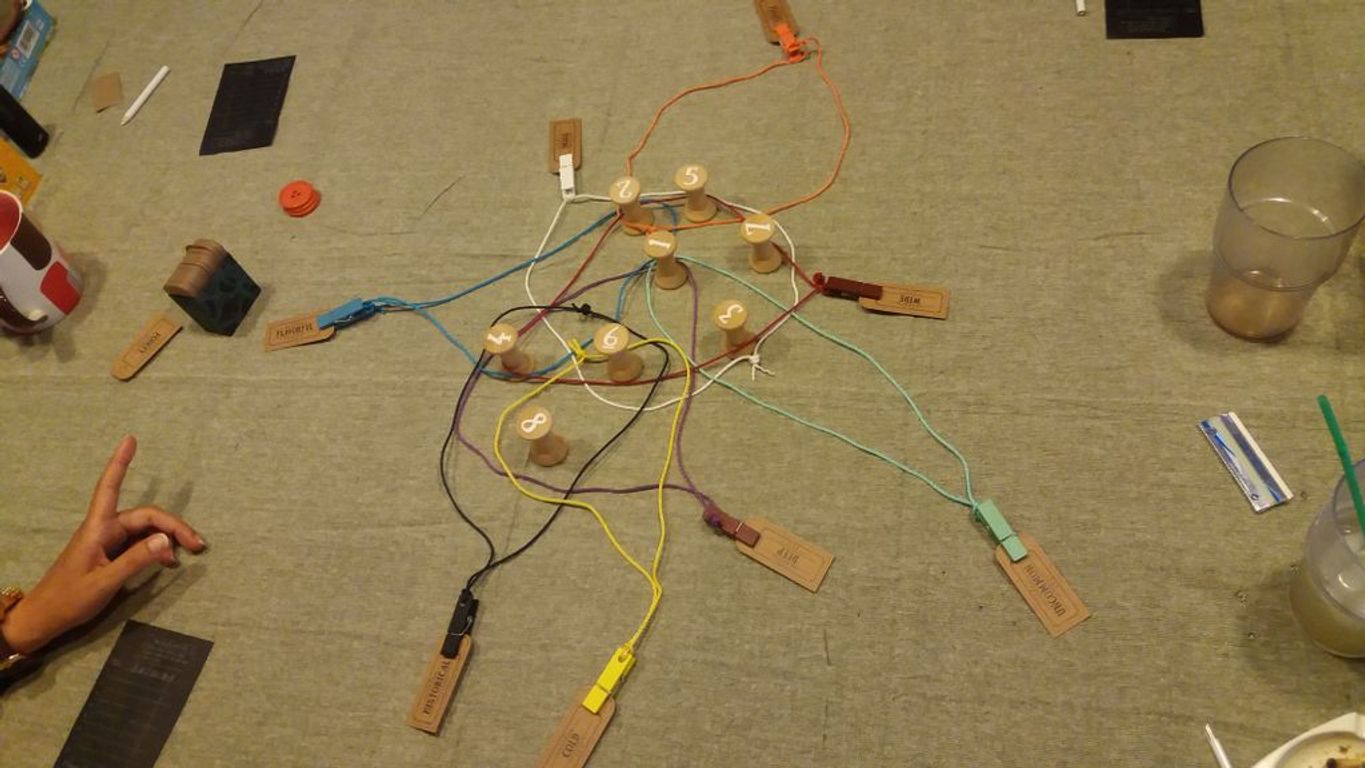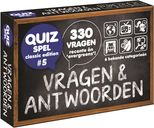
Knit Wit
Knit Wit is a word game along the lines of Scattergories, with players trying to think up unique answers to particular categories in order to score points, but instead of using fixed categories, players generate their own categories while playing the game.
To set up, each player takes numbered spools and looped strings based on the number of players, along with an answer sheet. A number of bonus buttons, which have 1-4 holes, are stacked on the table, again based on the number of players. Going clockwise around the table, each player (after the first) places one loop on the table so that it surrounds exactly one spool, then draws a word tag from the box and attaches it to this loop, then places one spool in one section of loop(s) that ha
... mehr lesen














